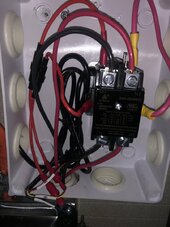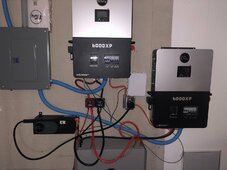MattMan119
Solar Geek
I would not in this case …. I ordered one of them relays and sent it back … there is no way the device can handle the 240v side…they are tiny and just could not support that type of throughput… but they came it can … not in my RV …I am thinking about a 24vac thermostat/bell transformer used in HVAC systems. Use the dry contacts and 24vac to operate a 24vac coil - 240vac contactor used in HVAC condenser units. I am just not comfortable putting 120/240vac into the dry contacts.
I am also looking at Solid State Relays where the DC input will be controlled by 12vdc via the dry contacts since I have a 30-90 vdc to 12vdc buck converter installed (powered by the battery stack via an inline fuse) which powers my PI and 10 inch touch screen. Another possibility is to use a low voltage opto-isolated relay via the dry contacts (and 12vdc) to control the contactor. In any case I want to use low voltage (24vac or less) via the dry contacts to control the contactor.
Oh I like the raspberry PI switch .. damn. … the cool stuff we can do with that …






